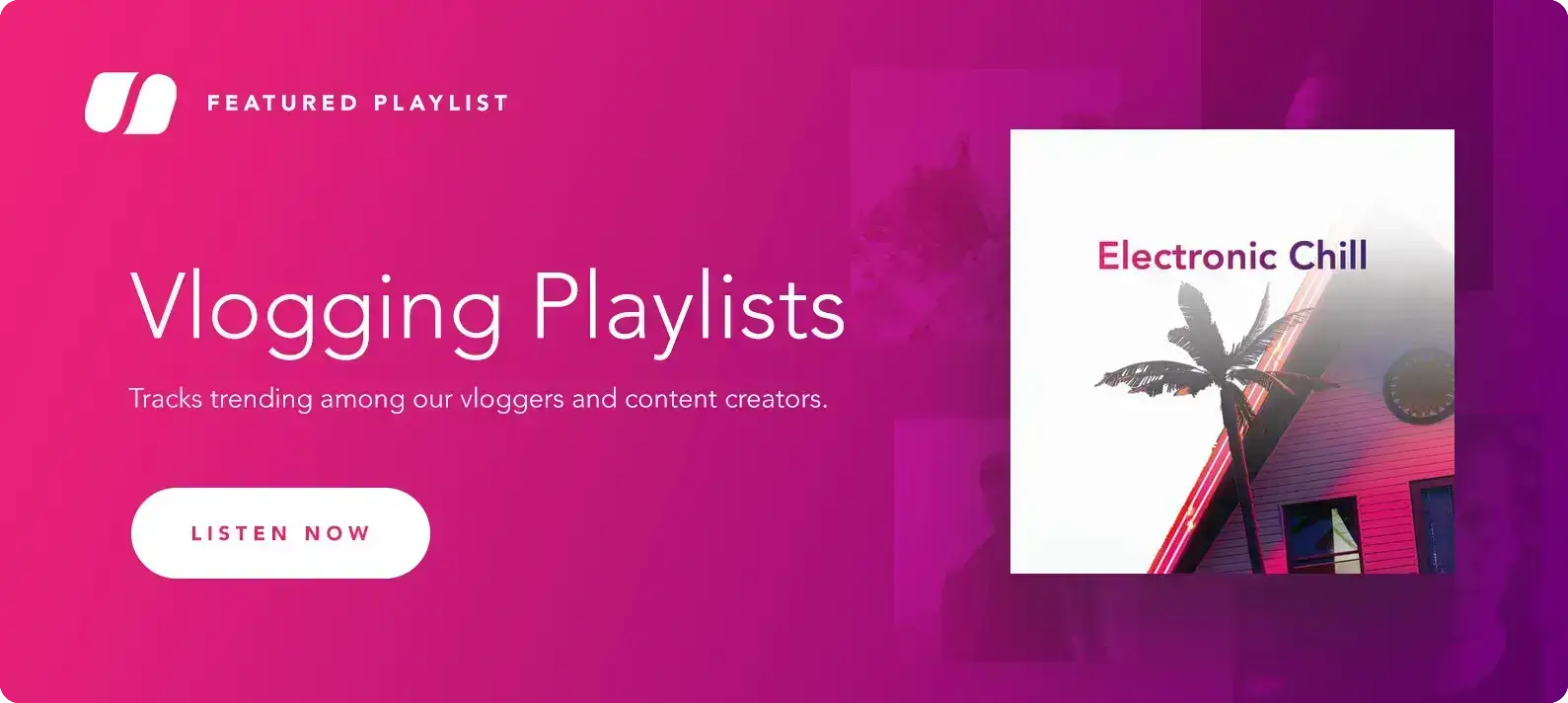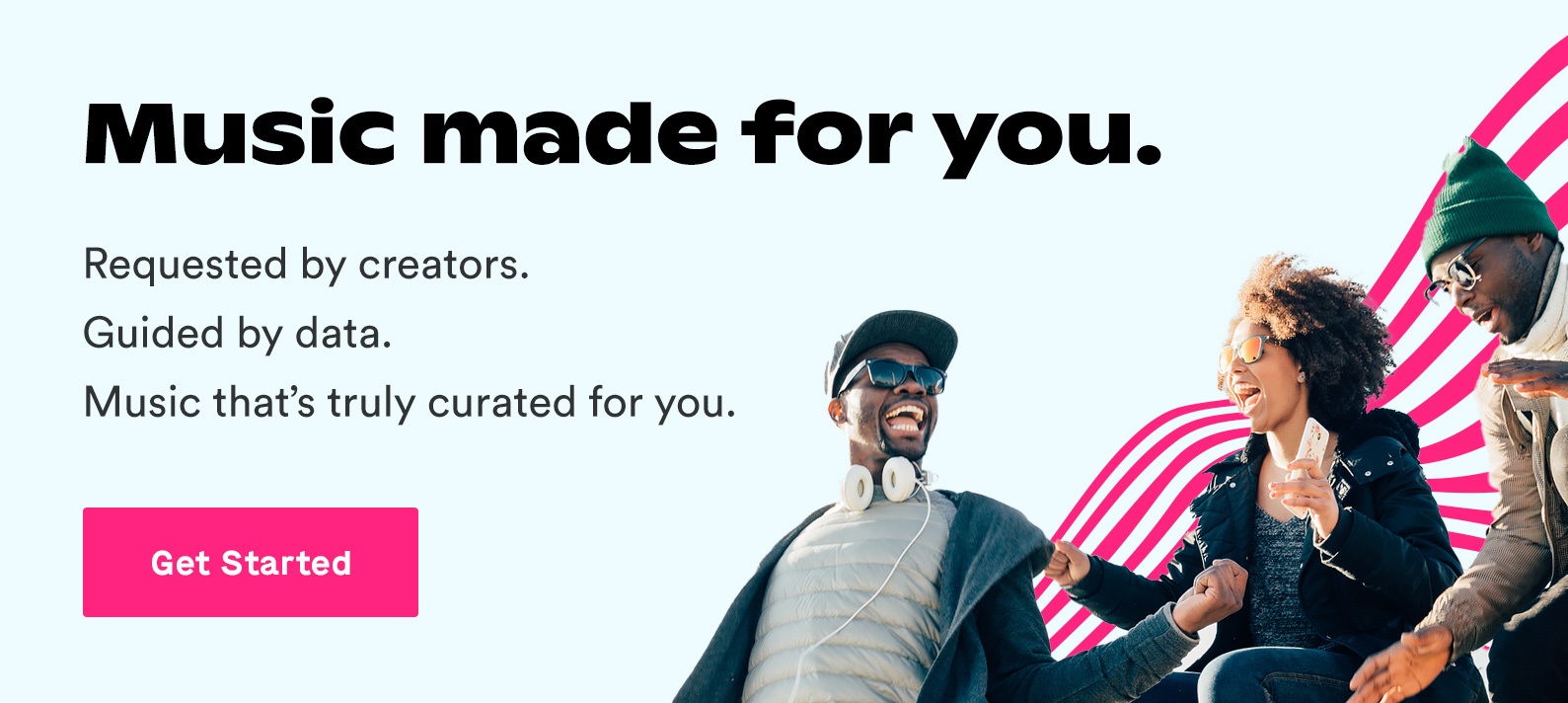How Can I Legally Use Copyrighted Music On YouTube?
*Updated November 2022
YouTube, Facebook, and even Twitch have begun to really crack the whip on copyright infringement. Whether it’s Content ID or DMCA strikes, video platforms are no longer the Wild West that they were even two years ago.
A common question for content creators that are just starting out on YouTube is, “How can I legally use copyrighted music on YouTube?” The truth is that you won’t find any shortcuts or hacks out there — that’s the kind of stuff that lands you in legal trouble. (And who wants to deal with a $100,000 fine for copyright infringement?)
The truth is that the only way to protect yourself is to get familiar with music licensing. That way, you’ll know just how you can legally use copyrighted music in your YouTube videos.
How does music licensing work for videos?
Music licensing might seem complicated, but it’s not really that scary…assuming you aren’t a pirate looking to break the rules. And hopefully once you finish this article, you’ll feel ready to find and use high-quality songs without getting any copyright strikes on your YouTube channel.
To help you get there, let’s start with the absolute basics: What is music licensing?

At its core, music copyright exists to protect the work of content creators like you. (Only in this case, they are musicians and recording artists and not filmmakers.) And music licensing is the process of getting permission from an artist so you can add their music to your projects.
Think about it this way: Copyright law opens up the door for individuals and companies to license out the work of other people. Your favorite artist writes and records a new song, and then you are able to incorporate that music into your videos.
It’s almost like a process to help creatives collaborate and use each other’s work to make their own stuff better.
How can I legally use copyrighted music on YouTube?
Of course, you didn’t actually write the songs, so you can’t claim ownership of them. If you want to legally use copyrighted music on YouTube, you’ll have to go out and get approval from the original creator in order to use it. That’s the second side of music licensing.
Copyright law makes sure that creators get paid when people use their work — that’s where YouTube’s music policy comes into play. The two halves of YouTube’s system work together, policing video uploads for copyright infringement and providing a place for creators to submit their own copyright claims.
%20(1)%20(1)%20(1).png?width=733&name=Screen%20Shot%202020-07-27%20at%2010.22.31%20AM%20(1)%20(1)%20(1)%20(1).png)
On one hand, that makes it easier for you. The rules are built into YouTube as a platform, so once you understand the rules, you’ll have the tools to follow them.
But the negative side of that is that YouTube is pretty quick to act if you make a mistake. So if you don’t legally use copyrighted music on YouTube, the system might take down your content, or let someone else monetize your video, or completely block your channel.
What are the steps to license a song?
Artists put their blood, sweat, and tears into creating a song. Record labels invest a lot of money in producing that song. And then legal teams (for the record label) have to protect that song from copyright infringement.
That means a dozen people might have a claim to any individual song. And each person is a partial owner of that song’s copyrights. So if you want to legally use copyrighted music on YouTube, you’ll need permission from everyone who is a copyright holder for that specific song.
Getting a license for a song means you’ll have to reach out to each person on that “copyright holder” list. Then you’ll negotiate a licensing agreement for your project and decide on a price. You might also have to determine royalty payments, which means sending a fraction of your project’s revenue to the copyright holders.
The music licensing process can take a few weeks or a few months, and it’ll run you anywhere from a couple hundred dollars to a couple thousand (depending on how popular the song is).
My guess is that reading that didn’t exactly leave a smile on your face. And when you imagine doing that for every song license for every video project, it’s easy to see how music licensing can snowball into an enormous amount of time, effort, and money.
But if you want to legally use a recent Billboard 100 hit in your YouTube videos, these are the steps you need to take to protect yourself from copyright infringement.
Is there another way to get music for YouTube?
Thankfully, you do have an alternative to dealing with traditional music licensing procedures.
Youtube royalty free music has quickly become a big trend for filmmakers because it avoids the old-fashioned music licensing model in favor of a process built specifically to get high-quality music into the hands of content creators.
Here’s how it works. A royalty free music company will license a song from an artist, and then they can license it out to content creators for a fraction of the cost. So instead of paying $5,000 for a song, you’ll pay $50 for a license to legally use that song in a specific project.
And since there are no record labels involved, you won’t have to worry about sending a portion of your revenue to copyright holders. You’ll pay for a license once, and that’s it.
(For a more in-depth breakdown of what “royalty free” really means for you as a licensee, check out this blog post.)
Soundstripe is a royalty free music company that’s a little different from other names in the industry. We own every single song in our library, so you won’t find our music anywhere else. That means we can guarantee you won’t have to worry about copyright claims anymore.
More importantly, you’ll have two options on how to license a song. You can either pay for a single song license and use that song in as many projects as you want. Or you can sign up for our subscription plan, which gives you unlimited access to our entire library.
Like I said earlier, there isn’t a shortcut to legally use copyrighted music on YouTube…at least, not if you use the traditional music licensing process. Royalty free music offers a different and better way for you to get radio-quality songs for all of your personal and commercial use video projects.
As an added bonus, royalty free music is a more affordable and more convenient option. You’ll get the songs you want for a price you can afford, and you can sleep easy knowing your days of worrying about copyright infringement are gone forever.
Final tips for using royalty free music in YouTube videos
To wrap things up on these questions surrounding royalty free music and copyrighted music on YouTube, the real trick for all of these background music questions comes down to ownership and what type of content you’re trying to create.
Sure, you can always use YouTube’s audio library or try to find some public domain music for your YouTube channel, but a good YouTube video is one that looks and sounds a certain way. Musicians know this and a good music owner is rarely going to work for free, and any commercial music owner is certainly going to protect their music with a copyright claim.
If you want good copyrighted music on youtube videos you’ll need to make the investment and find the best (and easiest) way to compensate music owners for their work. Which is where solutions like Soundstripe come in to help.
So, do your own research into creative commons music and how to find your own tracks in the YouTube video editor, but at the end of the day make the best decision for you and your YouTube videos.












